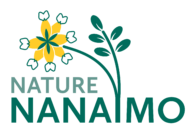Staffan Lindgren | October 16, 2020
Note: This is a revised, updated and expanded blog, first published on my personal website https://wordpress.com/view/cinnabarreflections.wordpress.com
A few years ago I attended a talk by Dr. Sarah Dudas at Vancouver Island University (VIU). She was discussing the impact of shellfish farming on biodiversity, particularly in her study area in Baynes Sound. In one of her first slides, she put up six photographs of marine molluscs, and asked the audience which ones were native to British Columbia. The answer was that only one of them was. A significant number of marine organisms were introduced accidentally in association with the introduction of the Japanese or Pacific Oyster, Crassostrea gigas, which is the large farmed oyster that is common along the southern BC coast. A good summary of the main species that accompanied the arrival of the Japanese Oyster, and their impact can be found at Exotic Introductions into BC Marine Waters: Major Trends. The native Olympia Oyster, once widespread and common, was listed as a species of Special Concern under SARA (Species at Risk Act) in 2003. You can read more about the history and fate of the Olympia Oyster at this blog from VIU’s Deep Bay Field Station. Many marine organisms get moved around via international trade, particularly with ships, whether attached to the hull, or in the ballast water. Consequently, introductions tend to occur most frequently around large ports. The Clear Seas web site is a good source of information.
Dr. Dudas’ talk made me think about what other exotic organisms are present among us, so I decided to write the original blog. Nobody really thinks much about whether an organism is native or not, but the fact is that the consequences can be quite dramatic. We are all aware of Scotch Broom (Cytisus scoparius), which is subject to annual “broom bashing” in order to curtail its negative effects on other flora, and Himalayan blackberry (Rubus armeniacus), which provides delicious berries, but also creates impenetrable thickets, not to mention rats (Rattus norvegicus and R. rattus) and mice (Mus musculus).
During the last year, media has been buzzing (literally) regarding the Asian Giant Hornet (Vespa mandarinia) (generally under another name that I refuse to acknowledge since it is misguided and sensationalizes the insect), the world’s largest vespid wasp, which appears to now have a foothold in northern Washington State (there were three more sightings just last week). This hornet is of particular interest to us in Nanaimo as the first nest on North American soil was found (and destroyed) by local beekeepers right here (see http://beesforbabar.org/pdf/20200204_agh_scientific_note_boreus_dec_2019.pdf for details) after three specimens of the hornet were found in the area. Generally, invasives are detected only after they have been established for many years, so we were extremely lucky to have detected this species rather quickly.
If we start looking around, we’ll find that many of the most common organisms we see around us are in fact introductions. I looked up my own records from iNaturalist, where I found that 35 of 344 species (10.2 %) recorded to date are introductions. Looking at all iNaturalist records from Nanaimo, that percentage is 14.2% (521 of 3,614) of recorded species. This is probably more realistic as I sometimes ignore species I know to be invasive, and therefore not of particular interest to me. Most of these introduced species are relatively harmless as far as I know, but some have significant impacts on our native fauna and flora.
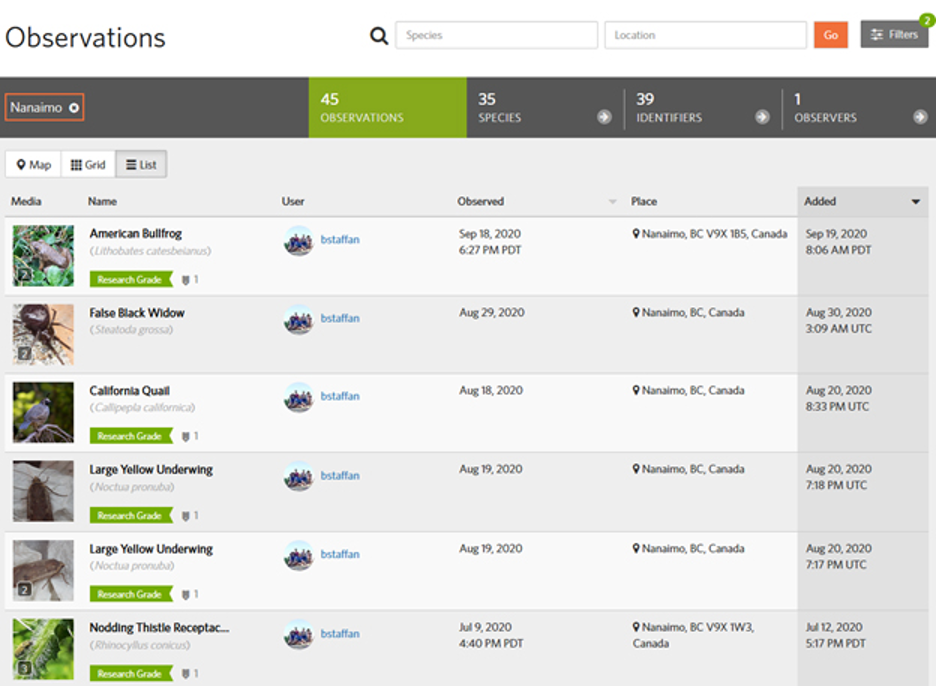
Among arthropods, many familiar insects like earwigs (Dermaptera) are all introduced, with two of the four species present in BC quite common. Most people are likely familiar with the European Earwig, Forficula auricularia, which frequently appears in and around homes. On the coast of the Salish Sea, the large seaside earwig, Anisolabis maritima is commonly found under driftwood on sandy beaches. A number of ground beetles (Coleoptera: Carabidae) are commonly dominant in urban and suburban areas. Most common is Pterostichus melanarius, which seems to be present almost everywhere, as well as Carabus nemoralis and C. granulatus, two large, fairly widespread and noticeable species. The most common exotic around my home, and probably throughout southern BC at this point, is the European Paper Wasp, Polistes dominula, which seems to build its little nests pretty much wherever there is some protected space, e.g., bird and bat houses, mail boxes etc. To most people it is probably just seen as a Yellowjacket Wasp (Vespula and Dolichovespula spp.), but luckily it is much less aggressive, so not quite as annoying to have around. The Gypsy Moth (Lymantria dispar), which has long been established in eastern Canada, has not been established in the west yet, but that is only thanks to annual surveys and local eradication sprays, which of course are very costly activities paid for by tax payers. Some of you may remember the invasion of the Asian Gypsy Moth (Lymantria dispar asiatica or L. dispar japonica) which arrived as “stowaways” on ships from Russia. It was stopped here in BC by a massive effort to detect and eradicate this destructive pest (it is worse than the European subspecies because of a much wider host range and the ability of females to fly, which allows it to disperse faster), and by changing lights in the Russian ports so the moths would not be attracted to the ships. If our current Asian invader, the Asian Giant Hornet, gets established, we may see some significant impacts that could include fatal stings, although the main threat would be to beekeepers (who incidentally farm the non-native Western Honey Bee (Apis mellifera)). Another Hymenopteran group, the ants, are particularly problematic once they get a foothold, e.g., the Imported Fire Ant (Solenopsis invicta) which has made life miserable in some areas of southeastern USA. Unfortunately we haven’t escaped the presence of several ant species among our BC invasives. The European fire ant (Myrmica rubra) is an invasive that has been particularly problematic in parts of the Greater Vancouver area, affecting gardening, property values, and the use of grassy areas. You can find out more about this and other invasive ant species in this seminar by Dr. Robert Higgins, TRU, given some years ago at UNBC in Prince George.
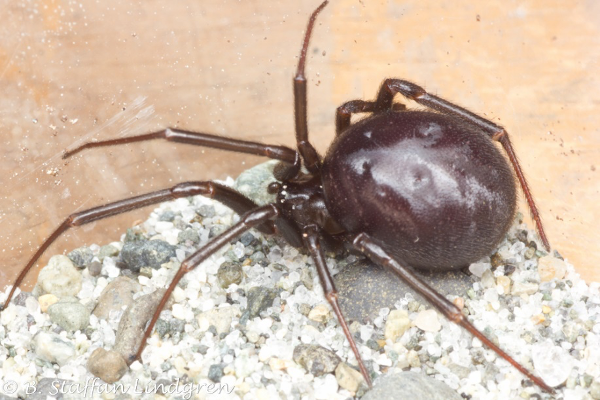
Many common spiders are also introduced, e.g., the most common orb weaver in the area where I live is (Araneus diadematus), a species I know well from my childhood in Sweden. Indoors the so-called house spiders (Tegenaria and Eratigena species) are also introduced, as is the Long-Bodied Cellar Spider (Pholcusphalangioides) (aka Daddy Long-Legs Spider) and the False Black Widow (Steatoda grossa). A more exotic looking introduction is the Woodlouse Spider (Dysdera crocata) presumably introduced along with its primary prey, sowbugs and pillbugs, which are terrestrial Crustaceans (See this blog). Our favourite garden helpers, the earthworms are almost exclusively exotic. Only four of 24 species are native, in fact (see this article for more information).
We don’t have to stop at invertebrates of course. Many of our most common bird species are also introduced, e.g., the Rock Pigeon (Columba livia), the European Starling (Sturnus vulgaris) and the House Sparrow (Passer domesticus). Rock pigeons were introduced to North America almost 400 years ago, when they were used for food and as carrier pigeons. A cousin of the Rock Pigeon, the Eurasian Collared Dove (Streptopelia decaocto) was introduced in the Bahamas in mid-1970’s, and has since marched at an extraordinary rate across the North American continent. It is now quite common in many areas in the west with regular observations all the way to Alaska. Sparrows and starlings were introduced much later, in the mid- to late 19th Century, along with other birds https://timeline.com/sparrows-invasive-species-america-9546e6a9e57e. Both are aggressive and will displace other birds from nesting sites, even killing young and adults to gain access to a nesting site. When I arrived in Vancouver in 1977, a truly exotic relative of the European Starling, the Crested Myna (Acridotheres cristatellus), was still a welcome sight for bird lovers. By the early 2000’s, however, they disappeared, in no small part because of its European cousin.
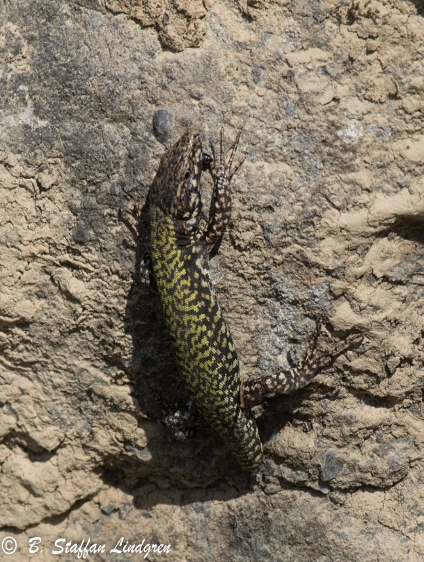
Other groups are also on the move, e.g., a recent arrival on Vancouver Island is the European Wall Lizard (Podarcis muralis), which was apparently released on the Saanich peninsula about 50 years ago. It is now on the move, having been spotted as far north as Denman Island. Sporadic reports from even further north may be of the native Northern Alligator Lizard (Elgaria coerulea). The wall lizard is particularly common in the Victoria area. In Nanaimo it has been recorded in North Nanaimo as well as in Chase River, as well as in Cinnabar Valley within a km of my home (iNaturalist data). A more familiar introduction to people in BC is the American Bullfrog (Lithobates catesbeianus), a large and voracious frog, which is now present pretty much everywhere in the lower mainland and on southern Vancouver Island. Similarly, the Red-eared Slider Turtle (Trachemys scripta elegans) is a common sight in various bodies of water, where it may seriously affect our native Western Painted Turtle (Chrysemys picta bellii). Sliders are abandoned pets, which unfortunately do well enough in our region to reproduce. A few unconfirmed reports from south and west of Prince George may indicate scattered presence of dumped pets, but although adults may survive, they may not be able to breed that far north. As of 2018, an additional 9 species of turtle, including the up to half-meter long Common Snapping Turtle (Chelydra serpentina), have been discovered in BC, all abandoned pets. Fortunately none of these are known to reproduce.

A rather more invisible problem is the introduction of non-native fish. Here on Vancouver Island we have 10 species of non-natives with established populations, including Brown Trout (Salmo trutta) and Smallmouth Bass (Micropterus dolomieui). Many of you may have heard of the Snakehead (probably Ophiocephalus marmoratus) spotted in a Burnaby pond, which led to an expensive hunt to remove the fish. Introductions by thoughtless individuals who release their pets occur with surprising frequency. Dragon Lake in Quesnel, BC, which is a primary source for Rainbow Trout (Oncorhynchus mykiss) eggs for hatcheries as well as a popular trophy Rainbow Trout catch and release lake, now has a thriving population of Carp (Carassius auratus) after someone released their goldfish (a domesticated form of the wild carp) into the lake. Various species of sportfish and bait fish released into lakes and rivers have led to expensive (tax-payer funded) operations to restore ecosystem health. Atlantic Salmon (Salmo salar) escapes from fish farms have not led to established populations yet, but the risk is always present as long as we persist with these operations. The latest example of non-native fish is what is thought to have been deliberate introductions of Yellow Perch (Perca flavescens) in two Okanagan lakes. On the extreme end, even specimens of the tropical Red-Bellied Piranha (Pygocentrus nattereri) have been released in BC waters, although they would presumably not be able to survive our winters!
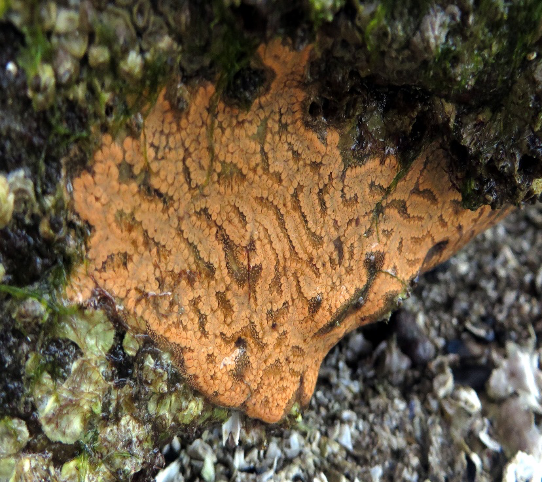
The above is just scratching the surface of what is a constant threat to native fauna. I have not covered invasive and noxious plants apart from mentioning a few species, even though weeds constitute a truly very expensive problem, ranging from displacement of native flora to poisoning our livestock. Nevertheless, I hope I have demonstrated that exotic organisms are rather more common than we might be aware of or like. The fact is that alien organisms are present wherever you care to look, and unfortunately many of them are economically or ecologically significant. Many of the exotics may appear harmless, and only a portion of them are invasive (causing ecological or economic harm), but in many cases we really don’t know much about them, so we can’t tell if they are significant or not. The take-home message is that you should not release any animal that do not belong here, and you should try to use native rather than non-native plants in your garden. We have plenty of our own species to enjoy!
